21 Sep Examples of Operational Risk and How it is Calculated
Operational risk encompasses the uncertainties coupled with hazards a company might encounter as it attempts to carry out its day-to-day business affairs.
In other words, it can also be referred to as a set of unsystematic risks, which varies from one industry to another.
A common assumption is that operational risks occur due to insufficient planning when it comes to the formulation process. Well, this is not entirely true as risks can crop up even when a lot of thought has been put into creating and building processes.
Let’s delve deeper and understand the concept of operational risk
The primary focus of this risk focuses on the accomplishment of things within an organization. It does not necessarily have to do with what is being produced. These risks involve making active decisions regarding how an organization should function.
Various internal management decisions determine the level of risks. However, the risks are not always guaranteed to end in failure, lower levels of production, or higher costs.
Considering the fact that it is all about man-made processes and procedures, these risks can be summed up as a human risk where operations fail as a result of human error. The level and intensity changes or varies from industry to industry. However, it does not change the fact that when it comes to making important investment decisions, potential investors should know that they should be taking it into account.
Examples of operational risk
An example that may involve operational risk is the maintenance of tools and systems.
Suppose that there are two systems requiring maintenance, but it is not feasible for the organization to afford both. Then, the risk changes depending upon the decision as to which system goes for repairs and which one is left as it is.
In the case a system ends up failing, risk is directly held in association with the resulting negative.
Other areas that can be considered as operational risk involves personal choices that an organization makes. If a business is about sales and yet chooses to maintain a below–average sales staff, because of reasons such as inability to pay competitive salaries, then this behavior can be deemed as an risk.
Another example could be of a manufacturing company that chooses not to have competent or skilled mechanics. Depending on third parties for that same work can be considered as an operational risk. This is because it not only affects the functionality of a system, but it also causes additional delays.
How to calculate operational risk?
It can be calculated using either a standard or factor-based approach surrounding the basic elements of Solvency Capital Requirement or SCR. A standard approach can theoretically direct towards a capital charge that would make 20% of the total Solvency Capital Requirement.
On the other hand, a factor-based approach means calculating the total SCR’s operational risk element. However, it remains unclear whether this approach will be able to measure the risks in its entirety.
Talk to us today about finding your business’ operational risk.
To find out more, contact one of our talented Risk Advisors today!


No Comments